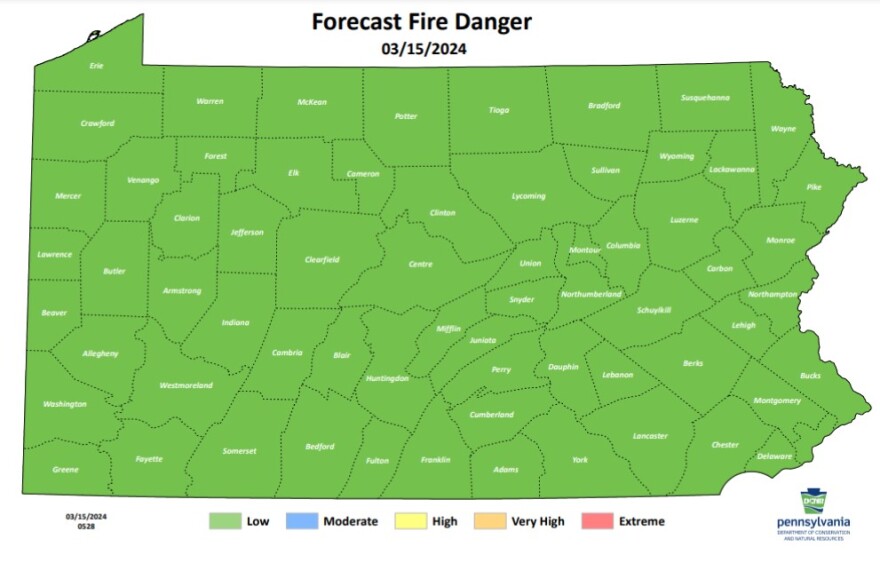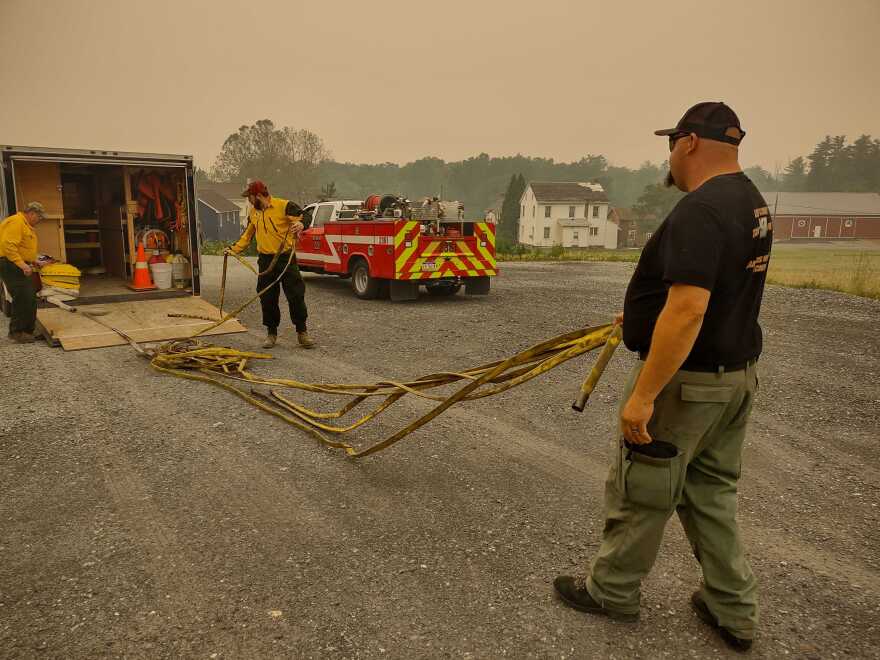BETHLEHEM, Pa. — As spring approaches the Lehigh Valley, so does the risk for wildfires.
And, across Pennsylvania, 99% of all wildfires are caused by people.
“We know that a simple act of carelessness when lighting a camp or bonfire could prove disastrous among tinder-dry conditions in some of our forests,” said Cindy Adams Dunn, secretary of the state Department of Conservation and Natural Resources, in a news release.
“We encourage Pennsylvanians to be cautious when lighting fires during these conditions to protect lives, wildlife habitats and our natural resources.”
As state officials prepare for spring wildfire season, which runs from March through May, they’re also urging residents to do their part to prevent wildfires. As the vast majority of wildfires across the state are caused by people, leaders encouraged common-sense fire safety tips to help protect the landscape.
“Taking the necessary precautions and practicing fire safety will prevent most brush and wildfires,” state Fire Commissioner Thomas Cook said. “We want to remind people to be careful with campfires, fireworks, backyard burning and all forms of outdoor open flame to protect our lands and keep our hardworking firefighters safe.”
While Pennsylvania rarely, if ever, sees the massive forest fires that threaten much of the American West, the state has seen an enormous spike in wildfires since 2020. Last year alone, the commonwealth saw more than 1,900 wildfires that burned 9,186 acres and caused 15 injuries and three deaths.
‘Human carelessness’
Wildfires and brush fires are commonly caused by burning debris, equipment use, power lines and campfires, officials said.

Light rainfall in many areas, lack of green foliage in the spring, low humidity and sunny, windy days all combine to increase chances of forest and brush fires spreading. Such fires are almost always traced to human carelessness.Pennsylvania Department of Conservation and Natural Resources
“Light rainfall in many areas, lack of green foliage in the spring, low humidity and sunny, windy days all combine to increase chances of forest and brush fires spreading,” according to the release. “Such fires are almost always traced to human carelessness.”
Residents should be sure there are no combustible items within 10 feet of the fire. Officials also recommend they have a rake or shovel, along with water, to properly suppress any embers.
Other advice from officials included:
- Checking the weather forecast for conditions that may support rapid fire spread outdoors, especially during a Red Flag Warning. Avoid all fires on these days;
- Making sure the area is not part of a burn-ban, where outdoor fires are prohibited;
- Clearing the area around the fire prior to starting it;
- Keeping the fire small and never leave it unattended;
- Before you strike a campfire match, first consider if it is too warm, dry or windy for a fire and if the surrounding area is free of leaves and other combustibles;
- Making sure there is a ready source of water (bucket or hose) nearby and a rake to extinguish any embers that might escape; and
- When you are done with the fire, put it out with water until all ashes are cold to the touch
For more information on wildfire safety, go to the DCNR’s website.


